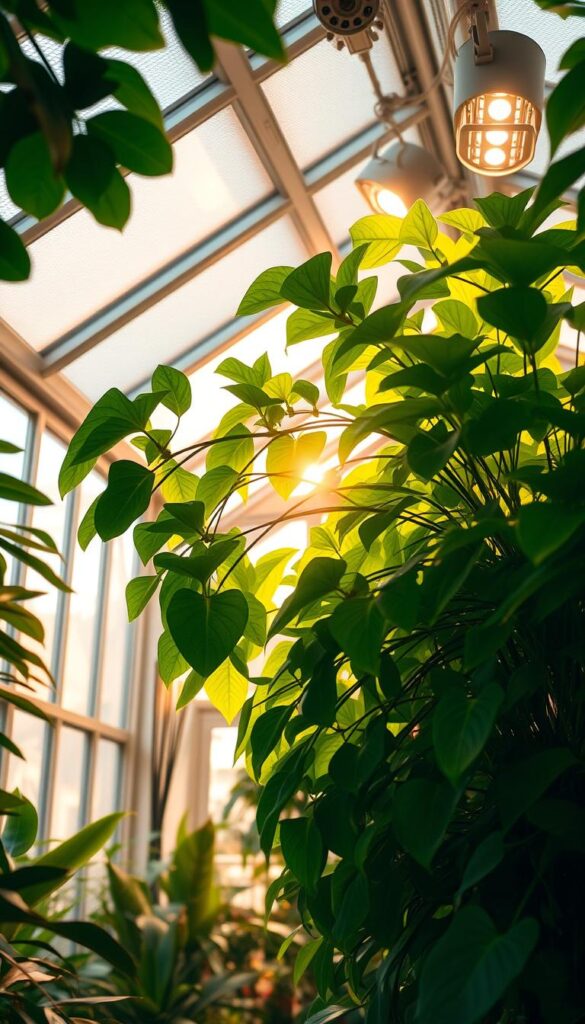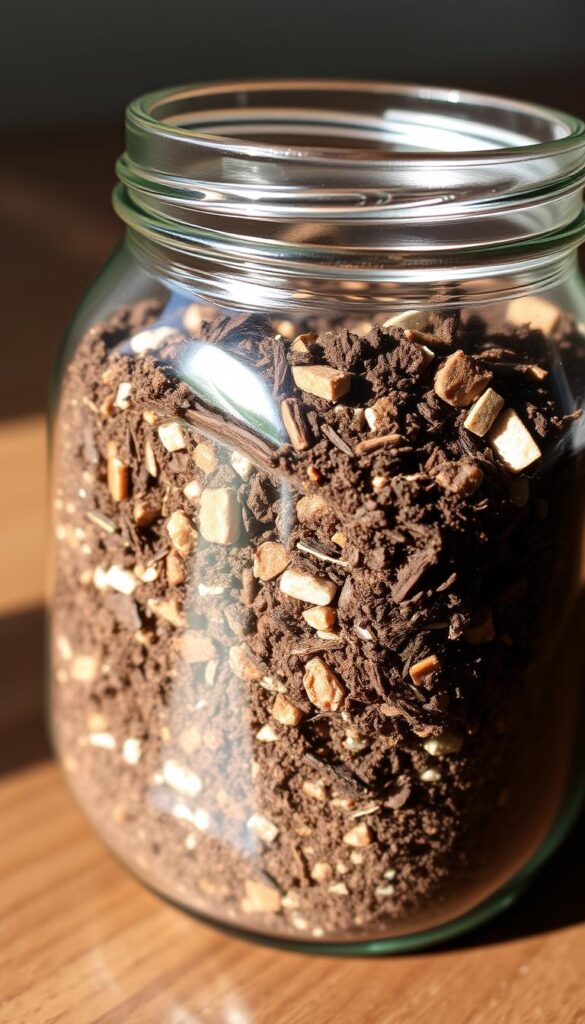Meet my beloved Philodendron Green Princess, a plant that has stolen my heart with its stunning, lush foliage and elegant charm. Whether you’re a seasoned plant parent or just starting your journey, this guide is here to help you give your Green Princess the love it deserves. I’ll share everything I’ve learned about nurturing this beautiful plant, from understanding its needs to making adjustments as the seasons change.
What makes the Philodendron Green Princess so special? Its heart-shaped leaves, with their unique variegation, bring a touch of tropical beauty to any room. But it’s not just about looks—this plant is also surprisingly adaptable, making it a great choice for almost any home. In this guide, I’ll walk you through the essentials of light, water, soil, and more, all in a friendly, first-person tone that makes you feel like you’re getting advice from a friend.
So, whether you’re looking to keep your Green Princess thriving or troubleshooting common issues, you’re in the right place. I’ll share personal tips, genuine experiences, and step-by-step guidance to help you become the ultimate caretaker of your Philodendron Green Princess. Let’s dive in and give your plant the TLC it deserves!
Understanding Your Green Princess
Getting to know your Philodendron Green Princess starts with understanding its origins. This beautiful plant hails from the lush regions of Central and South America, as well as the Caribbean. Its natural habitat plays a significant role in shaping its needs and adaptability, making it a versatile choice for indoor spaces.
Plant Background and Native Region
Natively, the Philodendron Green Princess thrives in warm, humid climates with filtered sunlight. This background explains why it prefers bright, indirect light and consistent moisture. Its adaptability to indoor conditions makes it a great option for plant enthusiasts of all levels.
Essential Characteristics I Appreciate
What truly sets the Green Princess apart is its stunning foliage. The heart-shaped leaves, adorned with unique variegation, add a touch of tropical charm to any room. I particularly love how each new leaf unfurls, bringing excitement and beauty to the plant’s ever-evolving appearance.
| Characteristic | Native Environment | Indoor Adaptation |
|---|---|---|
| Leaf Shape | Heart-shaped, variegated | Retains shape, thrives in bright spaces |
| Growth Pattern | Climbing, aerial roots | Can grow upward or trailing |
| Light Preference | Filtered sunlight | Requires bright, indirect light |
Observing my Green Princess, I notice its growth pattern is both climbing and trailing, giving it a versatile personality. This unique trait allows it to fit into various spaces, whether you prefer a hanging plant or one that climbs up a trellis. Understanding these characteristics not only deepens my appreciation but also helps in providing the best care possible.
Lighting and Placement for Optimal Growth
Lighting plays a crucial role in the health and beauty of your plant. Proper light exposure ensures vibrant foliage and robust growth.
Bright, Indirect Light Essentials
Your plant thrives in bright, indirect sunlight. Direct sunlight can scorch the leaves, so it’s important to filter the light. Placing your plant near a window with a sheer curtain is ideal.
How I Position My Plant Near Windows
I place my plant less than 6 feet from a south-facing window for optimal light exposure. This setup provides the right amount of indirect sunlight without risking leaf burn.
- Keep your plant near a window for bright, indirect light.
- Direct sunlight can damage the leaves, so avoid direct exposure.
- Use grow lights if natural light is insufficient.

philodendron green princess care guide
Watering and humidity are crucial for keeping your plant healthy. I water mine with about 0.5 cups every 9 days during indirect light conditions. Letting the soil dry slightly between sessions helps prevent overwatering.
Watering and Humidity Tips from My Experience
I manage humidity with occasional misting, especially in drier environments. This keeps the leaves vibrant and healthy. Consistency in watering and humidity helps prevent issues like root rot.
Fertilizing and Repotting Recommendations
I repot my plant yearly or when it doubles in size, using fresh potting soil. This ensures it has enough nutrients to thrive. Balancing water, humidity, and repotting keeps my plant in great shape.
| Aspect | Details | Best Practices |
|---|---|---|
| Watering | 0.5 cups every 9 days | Let soil dry slightly between sessions |
| Humidity | Mist occasionally | Use distilled water for misting |
| Repotting | Annually or when doubled in size | Use fresh potting soil |
Soil, Potting, and Nutrient Management
The right soil is the foundation of a healthy plant. For my Green Princess, I focus on creating a mix that supports strong growth and nutrient availability.
Selecting the Best Soil Mix
A well-draining soil mix is essential. I look for ingredients like coco coir, perlite, or vermiculite to ensure it drains excess water while retaining enough moisture. This balance helps prevent root rot and keeps the plant thriving.
- Well-draining to prevent waterlogged soil
- Organic matter for nutrient-rich environment
- Structure that supports root development

When and How I Repot My Green Princess
I repot my plant when it outgrows its container, usually once a year. This gives the roots room to expand and refreshes the soil. The process is straightforward:
| Aspect | Old Potting Mix | New Potting Mix |
|---|---|---|
| Structure | Compacted, less drainage | Loose, improved drainage |
| Nutrients | Depleted over time | Fresh and abundant |
| Root Space | Constricted | Ample for growth |
Repotting is a great opportunity to inspect the roots and ensure everything is healthy. The right mix enhances nutrient uptake, making my plant strong and vibrant.
Handling Common Issues and Troubleshooting
Even with the best care, your plant might face some common issues. Being vigilant and addressing problems early can make a big difference.
Identifying Overwatering and Root Rot Signs
One of the most common issues is overwatering, which can lead to root rot. Look for yellowing or drooping leaves, as these are early signs of trouble. To check for root rot, gently remove the plant from its pot. Healthy roots are firm and white, while rotting roots are soft and brown. If you spot rot, trim the affected areas with sterile tools and repot the plant in fresh, well-draining soil.
- Yellowing or drooping leaves can signal overwatering.
- Check roots by gently removing the plant from its pot.
- Trim any rotting roots and repot with fresh soil.
Managing Pests and Leaf Problems
Pests like spider mites or mealybugs can appear, especially in stressed plants. For minor infestations, manually remove pests with a damp cloth. Neem oil is also effective for controlling these bugs. Regular inspections help catch issues early, preventing them from becoming severe.
- Inspect leaves regularly for pests or spots.
- Use a damp cloth to remove pests manually.
- Apply neem oil for persistent infestations.
Early detection is key to rescuing a struggling plant. With quick action, your plant can recover and continue to thrive.
Seasonal Adjustments and Environmental Considerations
As the seasons change, so do the needs of my plant. Adapting its care routine to match the time of year ensures it stays healthy and thrives.
Adapting to Temperature Changes
Maintaining the right temperature is crucial. I keep my plant in an area where the temperature stays between 65°F and 80°F. During winter, I avoid placing it near drafty windows or cold surfaces to prevent stress. A digital thermometer helps me monitor the temperature, ensuring it stays within the optimal range. If needed, I use a humidifier to maintain the right conditions, especially in drier months.
Adjusting Light Exposure Across Seasons
Natural light varies throughout the year, so I adjust where I place my plant. In winter, I move it closer to south-facing windows to maximize light exposure. In summer, I use sheer curtains to filter the intense sunlight. This balance ensures the leaves stay vibrant without risking scorching. If natural light is scarce, I consider using grow lights to supplement the light my plant needs.
By adjusting temperature and light exposure each month, I create an environment that supports healthy growth. These small changes make a big difference in keeping my plant robust and full of life. Seasonal adjustments are key to providing the best possible care and ensuring my plant continues to flourish year-round.
Enhancing Growth with Companion Tips
Creating a harmonious indoor garden is not just about one plant; it’s about how they complement each other. I love how companion planting can elevate the beauty and health of my space.
Choosing the Ideal Companion Plants
Pothos and peace lilies are great companions. They thrive in similar conditions and add elegance to the room. These plants improve air quality and create a serene environment.
- Pothos: A low-maintenance option that grows well with bright, indirect light.
- Peace Lilies: Known for their elegant white blooms and excellent air-purifying qualities.
When arranging, ensure each plant has enough space and light. I place taller plants towards the back and shorter ones in front. This setup ensures all plants get adequate light and room to grow. I’ve found that this arrangement not only looks good but also keeps the plants healthy and thriving.
By pairing my plant with these companions, I’ve created a vibrant and balanced space that feels like a tropical oasis. It’s amazing how a little creativity can boost growth and beauty in your garden.
A Final Note on Nurturing Your Green Princess
As you continue your journey with your Green Princess, remember that every plant is unique. Over the years, I’ve learned that it’s the small, consistent efforts that make the biggest difference. Whether it’s adjusting the lighting, monitoring humidity, or simply giving your plant a little extra attention, these actions show your plant the love it deserves.
Keep an eye on those subtle signs—like leaf color and drooping—that signal your plant’s needs. Tools like a humidifier and watering calculator can be your best friends in keeping things balanced. I’ve found that staying proactive, especially during seasonal changes, keeps my Green Princess thriving.
It’s amazing how such a small plant can bring so much joy. By staying attentive and adaptable, you’ll create an environment where your Philodendron can flourish. Trust me, the effort is worth it—there’s nothing quite like seeing your Green Princess shine in your home.
